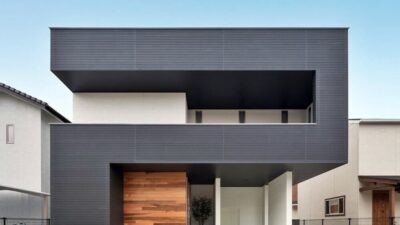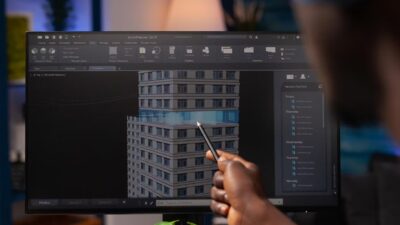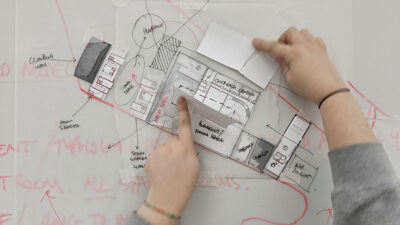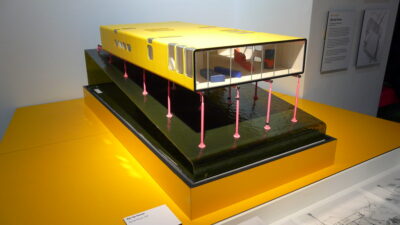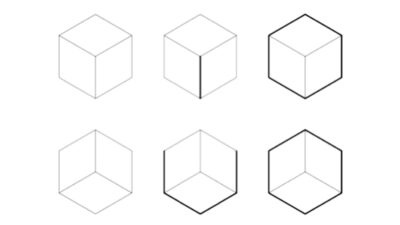Architecture, an artful blend of creativity and science, plays a crucial role in shaping our living environments. In Minnesota, architects are at the forefront of designing structures that are not just functional but also aesthetically pleasing and environmentally conscious. This article will guide you through the steps needed to pursue a career in architecture in the Land of 10,000 Lakes.
Educational Requirements
High School Preparation
The journey to becoming an architect begins in high school. Aspiring architects should focus on mathematics and science subjects, as these provide a solid foundation for architectural studies. Courses in art and design are also beneficial, fostering creativity and design thinking.
Bachelor’s Degree
After high school, the next step is obtaining a Bachelor of Architecture (B.Arch.) degree. This program typically spans five years and covers a range of subjects from design and construction to history and theory of architecture. Choosing a college with a program accredited by the National Architectural Accrediting Board (NAAB) is crucial, as this accreditation is often required for licensure.
Internship
Gaining practical experience is an essential part of architectural training. Internships, either during or after college, provide hands-on experience and a real-world understanding of architectural practices.
The Architectural Experience Program (AXP)
The AXP, administered by the National Council of Architectural Registration Boards (NCARB), is a comprehensive training program that aspiring architects must complete. It typically requires around 3,740 hours of documented experience, covering areas like project management and design.
Licensing in Minnesota
Passing the Architect Registration Examination (ARE) is a pivotal step in becoming a licensed architect in Minnesota. The ARE is a comprehensive test consisting of several divisions, each focusing on different aspects of architectural practice, such as project management, planning, and design. This exam assesses a candidate’s ability to apply knowledge and skills in real-life scenarios, ensuring they are well-prepared for the challenges of the profession.
The ARE is developed and maintained by the National Council of Architectural Registration Boards (NCARB) and is continually updated to reflect the evolving nature of architecture. Aspiring architects in Minnesota must pass all divisions of the ARE, which requires significant preparation and study. The state may also have specific eligibility requirements to sit for the ARE, such as completing a degree from an accredited program and fulfilling certain experience requirements.
Minnesota Board of Architecture
The Minnesota Board of Architecture plays a crucial role in maintaining the standards of architectural practice within the state. After passing the ARE, candidates must apply to the Board for licensure. The Board evaluates each application to ensure that all requirements, including educational qualifications, experience, and examination scores, are met.
The Board also provides guidelines and resources for architects, ensuring that they practice ethically and competently. Moreover, it serves as a regulatory body that addresses any professional conduct issues, ensuring public safety and maintaining the integrity of the profession.
Continuing Education
Continuing education is vital for architects in Minnesota, as it helps them keep pace with a rapidly changing field. The state requires licensed architects to complete a certain number of continuing education hours within a specified period to renew their licenses. These educational activities can include attending workshops, seminars, and conferences, or completing online courses.
This requirement emphasizes the importance of lifelong learning in the architectural profession. Through continuing education, architects can stay informed about the latest design trends, technological advancements, building codes, and sustainability practices. This not only enhances their skills and knowledge but also ensures that they can provide the best possible service to their clients and the community.
In addition to the mandatory continuing education, many architects choose to pursue further learning opportunities voluntarily. They might specialize in a particular aspect of architecture, such as green building or historical preservation, or gain expertise in a specific type of software or design methodology. This pursuit of knowledge not only broadens their skill set but also enhances their marketability and career prospects.
Career Path and Opportunities
Entry-Level Positions
Newly licensed architects often start in entry-level positions, such as junior architects or architectural designers. These roles involve working under the supervision of experienced professionals and focus on developing design skills and technical knowledge.
Career Progression
Career progression in architecture can be diverse. Some architects may choose to specialize in specific building types, such as residential or commercial, while others might focus on sustainability or historic preservation.
Specialization
Specializing in a particular aspect of architecture, such as landscape, urban design, or green building, can open up additional opportunities and niches in the profession.
Staying Current in the Field
The architecture industry is dynamic, with constant advancements in technology and evolving design trends. Minnesota architects must stay informed about these changes to remain competitive and effective. The integration of technology in architecture has been significant, particularly with the adoption of Building Information Modeling (BIM). BIM allows architects to create digital representations of physical and functional characteristics of spaces, facilitating a more integrated and collaborative approach to building design.
Sustainability is another key trend shaping the field. Architects are increasingly tasked with designing buildings that are energy-efficient, environmentally friendly, and sustainable over the long term. This includes the use of renewable energy sources, green building materials, and techniques that reduce the carbon footprint of buildings. Emerging technologies like virtual reality (VR) and augmented reality (AR) are also becoming more prevalent. These tools help architects and clients visualize projects in a more immersive way, improving design accuracy and client satisfaction.
Professional Organizations
Involvement in professional organizations like the American Institute of Architects (AIA) is invaluable for architects in Minnesota. These organizations provide a platform for learning about the latest industry trends, accessing educational resources, and attending conferences and workshops. The AIA also advocates for the profession at the national and state levels, working on issues like licensing standards and building regulations.
Networking
Networking is a powerful tool for career development in architecture. It enables professionals to connect with peers, mentors, and industry leaders. Through networking, architects can discover new job opportunities, collaborative projects, and innovative ideas. Events hosted by professional organizations, local design communities, and architecture schools are excellent venues for building these connections. Engaging in social media platforms and online forums dedicated to architecture also helps in expanding one’s professional network.
The Impact of Technology on Architecture
- Software and Tools. Modern architecture heavily relies on software for designing and modeling. Tools like AutoCAD, Revit, and SketchUp are indispensable in today’s architectural practice;
- Sustainable Design. Sustainable design is increasingly important, with a focus on creating energy-efficient, environmentally friendly buildings. Architects in Minnesota are at the forefront of integrating sustainable practices in their designs, reflecting the state’s commitment to environmental stewardship.
Challenges and Rewards of the Profession
The architectural profession is inherently demanding, characterized by tight deadlines, complex client requirements, and the need for precision in every aspect of design and implementation. Architects in Minnesota often juggle multiple projects simultaneously, requiring strong organizational and time-management skills. The process of seeing a project from conceptual design to completion can be lengthy and involves meticulous attention to detail and adherence to safety standards and building codes.
Despite these challenges, the profession is deeply rewarding. The satisfaction derived from creating functional, beautiful spaces that enhance people’s lives is a significant motivator for many architects. The tangible results of their hard work — whether it’s a residential home, a public park, or a commercial building — contribute to a sense of accomplishment and professional pride.
Creative and Societal Impact
Architects play a crucial role in shaping the environment we live in. They have the unique ability to influence how communities are built and how spaces function for their inhabitants. In Minnesota, architects are responsible for designing spaces that not only meet the aesthetic and functional needs of users but also consider the environmental impact and sustainability.
The profession is a blend of art and science, allowing architects to express their creativity while solving practical problems. The impact of their work extends beyond mere construction; they contribute to the cultural, social, and economic fabric of the communities they serve. Through thoughtful design, architects have the power to enhance community well-being, promote sustainability, and create lasting legacies in the built environment.
Conclusion
Becoming an architect in Minnesota is indeed a journey marked by rigorous education, hands-on experience, and a commitment to lifelong learning. It’s a path that demands dedication, creativity, and a passion for designing spaces that are not only aesthetically pleasing but also functional and sustainable. The architectural profession is more than just a career; it’s a calling that enables individuals to leave a tangible mark on the world through their designs and innovations.
The rewards of being an architect in Minnesota are manifold. Architects have the unique privilege of shaping the physical landscape, creating structures that could stand the test of time and serve as a testament to human ingenuity and creativity. They play a pivotal role in community building, impacting how people live, work, and interact with their environment. This impact extends beyond mere buildings; it influences the social, cultural, and ecological fabric of society.
For those drawn to the field, the path involves continuous growth and adaptation. The ever-evolving nature of technology and design trends means that architects must be lifelong learners, always ready to embrace new ideas and methodologies. This dynamic aspect of the profession keeps it fresh and exciting, offering endless possibilities for creativity and innovation.
In summary, embarking on the path to becoming an architect in Minnesota is a challenging yet immensely rewarding journey. It’s a career that offers the opportunity to blend artistic vision with practical skills, making a lasting impact on both the environment and society. For the aspiring architects, the journey is not just about building structures; it’s about constructing a legacy that enriches lives and enhances the world we live in.



